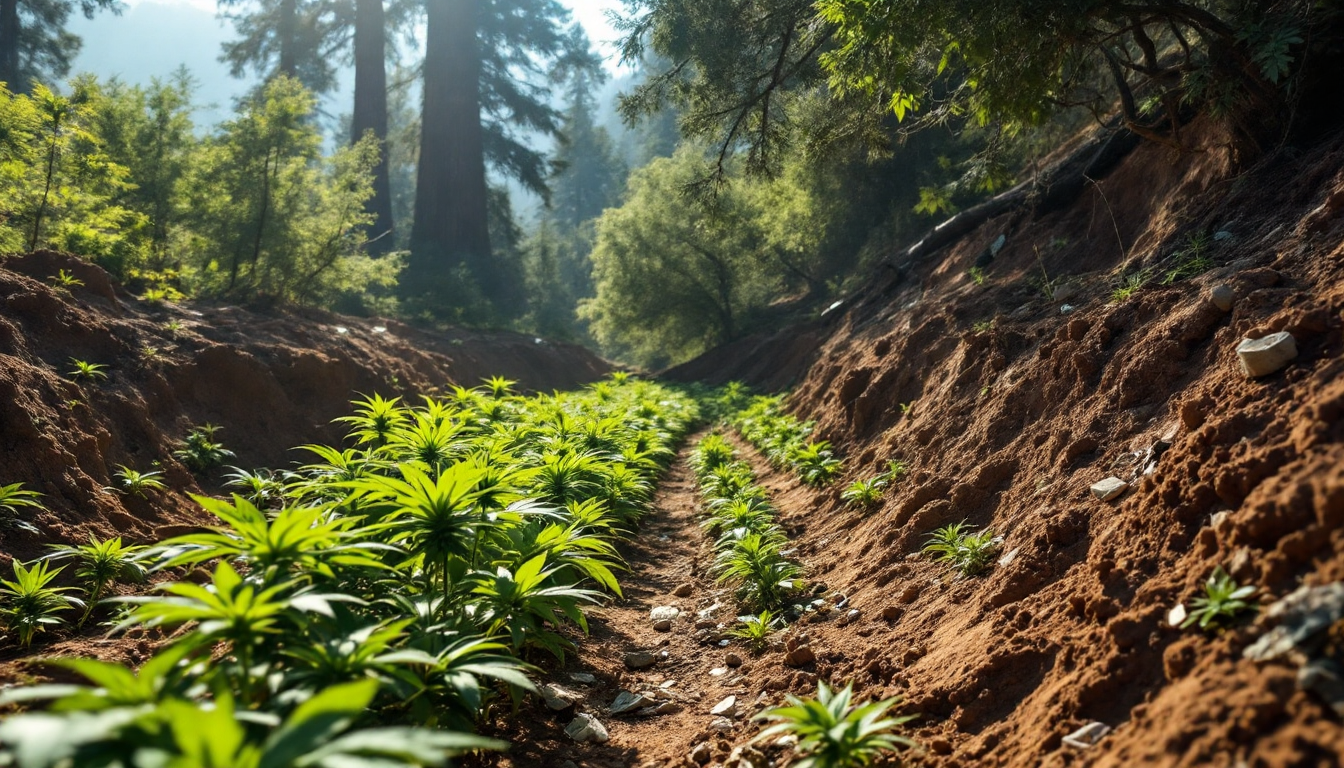Table of Contents
Illegal marijuana cultivation is a major issue that affects not only law enforcement but also our environment, especially in protected areas like Sequoia National Park. Just recently, authorities took down a significant illegal marijuana farm, shedding light on the devastating impact organized drug-trafficking operations have on these beautiful landscapes.
In this piece, we’ll explore the details of this operation, its environmental repercussions, and what it means for national parks across the United States.
Details of the Illegal Cultivation Operation
Last week, the National Park Service (NPS) announced a major victory in the fight against illegal cultivation, successfully removing a large marijuana farm from Sequoia National Park.
Crews worked tirelessly to extract 2,377 full-grown marijuana plants and nearly 2,000 pounds of debris, cleaning up a devastated area spanning about 13 acres. This operation unearthed a disturbing trend indicative of a well-organized drug-trafficking network that has been a thorn in the park’s side for nearly two decades.
Authorities had previously discovered the site back in 2024, but had to delay the full cleanup due to hazardous chemicals in the area.
Alongside the marijuana plants, crews stumbled upon a semi-automatic pistol and makeshift camps equipped with kitchens.
But perhaps most alarming was the discovery of dangerous substances, including Methamidophos, an insecticide that’s been banned in the U.S. for over 15 years. This raises serious concerns about the safety of park visitors and the surrounding ecosystem, as runoff from these sites can introduce harmful toxins into the environment.
Environmental Consequences of Illegal Cultivation
The environmental fallout from these illegal operations stretches far beyond the visible damage of the marijuana farms. The NPS warns that runoff from these cultivation sites could have contaminated nearby creeks and waterways, putting both wildlife and park visitors at risk.
Did you know that each marijuana plant can consume six to eight gallons of water each day? That’s a significant drain on local water resources that should be nourishing native plants and animals.
Additionally, evidence of poaching and the creation of illegal trails further underscores the ecological harm these operations cause. The clearing of natural vegetation not only disrupts local ecosystems but also leads to soil erosion and habitat destruction. As authorities continue their fight against these illegal activities, the long-term health of our national parks hangs in the balance.
Ongoing Investigations and the Path Forward
Despite recent efforts to dismantle these illegal farms, no arrests have yet been made, and investigations are still underway. The NPS has urged the public to report any information about illegal cultivation activities on park land. Community involvement is crucial; it’s up to all of us to protect our national parks and ensure that such destructive operations don’t happen again.
While the battle against illegal marijuana cultivation poses significant hurdles, it also emphasizes the urgent need for greater awareness and proactive measures to protect our natural landscapes. As we look ahead, engaging in conversations about environmental conservation and safeguarding our national parks is vital to mitigate the consequences of these illicit activities. After all, our natural treasures deserve to be preserved for future generations, don’t you think?





